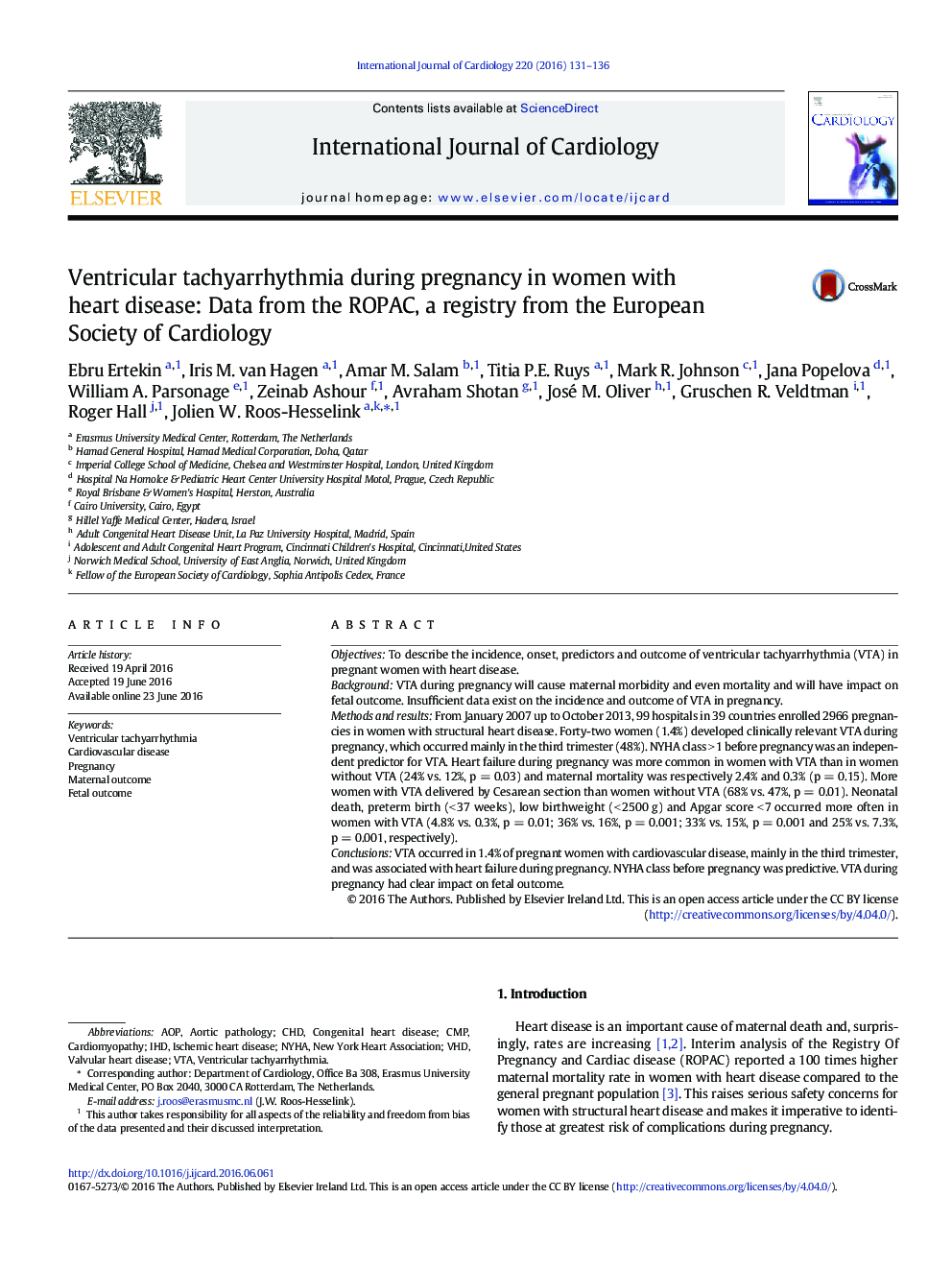| Article ID | Journal | Published Year | Pages | File Type |
|---|---|---|---|---|
| 5963411 | International Journal of Cardiology | 2016 | 6 Pages |
ObjectivesTo describe the incidence, onset, predictors and outcome of ventricular tachyarrhythmia (VTA) in pregnant women with heart disease.BackgroundVTA during pregnancy will cause maternal morbidity and even mortality and will have impact on fetal outcome. Insufficient data exist on the incidence and outcome of VTA in pregnancy.Methods and resultsFrom January 2007 up to October 2013, 99 hospitals in 39 countries enrolled 2966 pregnancies in women with structural heart disease. Forty-two women (1.4%) developed clinically relevant VTA during pregnancy, which occurred mainly in the third trimester (48%). NYHA class > 1 before pregnancy was an independent predictor for VTA. Heart failure during pregnancy was more common in women with VTA than in women without VTA (24% vs. 12%, p = 0.03) and maternal mortality was respectively 2.4% and 0.3% (p = 0.15). More women with VTA delivered by Cesarean section than women without VTA (68% vs. 47%, p = 0.01). Neonatal death, preterm birth (< 37 weeks), low birthweight (< 2500 g) and Apgar score < 7 occurred more often in women with VTA (4.8% vs. 0.3%, p = 0.01; 36% vs. 16%, p = 0.001; 33% vs. 15%, p = 0.001 and 25% vs. 7.3%, p = 0.001, respectively).ConclusionsVTA occurred in 1.4% of pregnant women with cardiovascular disease, mainly in the third trimester, and was associated with heart failure during pregnancy. NYHA class before pregnancy was predictive. VTA during pregnancy had clear impact on fetal outcome.
